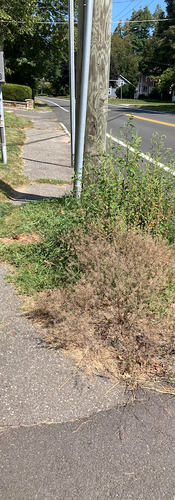Before moving to Stafford, I lived in a lot of places. Brooklyn, New York. Edgewater, New Jersey. Norwalk, Monroe, East Hartford, and Woodstock — all in Connecticut. Some of those places were supremely walkable — like Brooklyn — and others seemed to reject sidewalks out of principle (I’m looking at you, Woodstock). But if I were Goldilocks and looking for just the right level of walkability, I would have found it in Brattleboro, Vermont.
I lived a five-minute walk from downtown restaurants, shops, breweries, galleries, parks, and a grocery store. If I walked a few minutes in a different direction, I could be on the Retreat Trails. But I could also slap a leash on my dog and get my daily three-mile walk in without worrying about being hit by a car.
Stafford shares a lot in common with Brattleboro. We’re roughly the same size in terms of population and have a densely populated downtown area (or, as we like to call it around here, “the Borough”) with outlying areas that are more rural. But, for some reason, we haven’t achieved quite the same level of walkability (or bikeability, for that matter).
Today, it takes me about 10-15 minutes to walk from my house to downtown, but between the section of East Street that I have to navigate without the help of sidewalks and the waist-high weeds on the sidewalks, I find myself making excuses to get in the car and just drive downtown. Occasionally, I see some other people braving this stretch of road, but considering we’re less than a mile from downtown, I would expect to see many more (especially when events are happening downtown).
Listen, I could go on and on about the environmental and health benefits of creating walkable and bikeable places, but I know better than to believe that will sway most people. However, creating communities that value walkability has real economic benefits. Don’t believe me? Let’s dive into the numbers.
The economics of walkability
As far back as 1999, a study found homebuyers were willing to pay $20,000 more for homes in walkable areas. Ten years later, another study found the impacts of walkability were even more dramatic. In 2009, houses with above-average walkability could command about $4,000 to $34,000 more than houses with just average levels of walkability. Unless you’re a realtor or looking to sell your home, this probably isn’t very interesting to you. But if you want to see downtown Stafford prosper and the businesses there grow, then walkability should definitely be one of your priorities.
According to Commute Options, “Making neighborhoods and business districts more walkable increases the number of people who shop and dine there. Some studies show that people on foot may spend as much as 65% more than people driving. In one particular study in Brooklyn, redesigning a parking lot into a pedestrian plaza boosted retail sales by 172%.”
The same article points out that a Brookings Institute study “found that 63 percent of millennials would prefer to live where they do not need a car very often.” As an official Xenniel (or elder Millenial, as some of the not-so-generous people call us), I can confirm this. Do you know how many friends I have who choose to live in West Hartford? A lot. And it’s not because of the affordability — for them, it’s all about the walkability. (That trend will only grow when Gen Z starts buying homes.)
How important is walkability to you?
0%I love to walk. Bring on the sidewalks!
0%It would be nice to take the occasional stroll to downtown.
0%Meh. I don't think about it much.
0%I drive everywhere. I couldn't care less.
Small towns like Stafford have an opportunity to attract these kinds of homebuyers and new residents — which, incidentally, would go a long way toward creating the kinds of traffic and demographic shifts needed to bring in more restaurants and retail businesses (like grocery stores). But we must do it wisely to avoid ruining the essential charm of our small town and rural areas.
According to Conservation Tools, “Sprawl development is the dominant form of development in America.” And it’s a threat to farmland and wild areas: “The American Farmland Trust reports that between 1982 and 2007, the U.S. population grew by 30% percent. During the same time period, developed land increased 57%.” The consequences don’t end there. “Sprawl has multiple economic costs, including increased travel costs; decreased economic vitality of urban centers; loss of productive farm and timberland; loss of natural lands that support tourism and wildlife related industries (worth $7 billion/year in Pennsylvania alone); increased tax burdens due to more expensive road, utility and school construction and maintenance costs; loss of the rural characteristics that make many communities attractive to homebuyers; and increased car use leading to higher air pollution and increased health care costs for diseases like asthma.”
Embracing walkability in the borough is about more than just improving and extending sidewalks, though that's a start. Finding ways to grow the housing options in this area is also essential to attracting new people who want to wake up on a Saturday morning and walk to get a cup of coffee or stroll during Arts on Main without having to find parking. The redevelopment of the Borough School into apartments is a good start. The plan for the proposed remediation and repurposing of the Witt School also includes apartments. Putting in bike lanes (or paths) and racks so people can safely leave their bikes while they shop downtown is also key to keeping Main Street bustling.
















